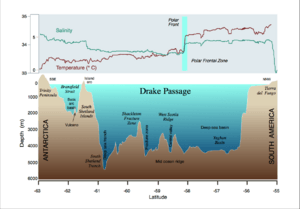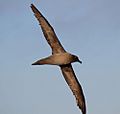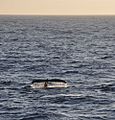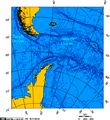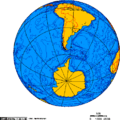Drake Passage facts for kids
The Drake Passage is a wide stretch of water. It connects the Atlantic Ocean and Pacific Oceans. This important passage is located between South America and Antarctica. To the north, you'll find Cape Horn at the tip of South America. To the south are the South Shetland Islands, which are part of the British Antarctic Territory. The Drake Passage is also a key part of the Southern Ocean.
This passage is named after Sir Francis Drake. He was an English explorer and sea adventurer. Sir Francis Drake accidentally found this passage in 1578. However, he never actually sailed through it. Back then, sailing through the Strait of Magellan was considered safer.
The Drake Passage offers the shortest sea route to Antarctica from the rest of the world. The only islands you'll find in this vast passage are the Diego Ramírez Islands. They are about 60 kilometers (37 miles) south of Cape Horn.
Sailing the Drake Passage
The Drake Passage is famous for its very rough seas. It's common to see waves as tall as 10 meters (33 feet) here! This is because there are no large landmasses to block the strong winds and currents. These winds and currents travel all the way around Antarctica.
Despite the challenging conditions, many ships sail through the passage. They carry scientists, tourists, and supplies to Antarctica.
Amazing Wildlife
The Drake Passage is a fantastic place to spot amazing wildlife. You might see many different kinds of Whales, like Humpback whales. Dolphins often leap through the waves.
Seabirds, such as albatrosses, soar gracefully above the water. And, of course, you can often see penguins swimming and diving in these rich waters. It's a busy highway for marine life!
Other Names
In older books and maps, the Drake Passage was sometimes called the Drake Strait.
Images for kids
-
The plot shows an yearly average (2020) of the surface current strength (from GODAS dataset), together with streamlines. Following the streamlines, it is easy to see that the current is not closed in itself but interacts with the other ocean basins (connecting them). The Drake Passage plays a major role in this mechanism.
-
Humpback whales are a common sight in the Drake Passage
-
Hourglass dolphins leaping in the Passage
-
Drake Passage or Mar de Hoces between South America and Antarctica
See also
 In Spanish: Pasaje de Drake para niños
In Spanish: Pasaje de Drake para niños




